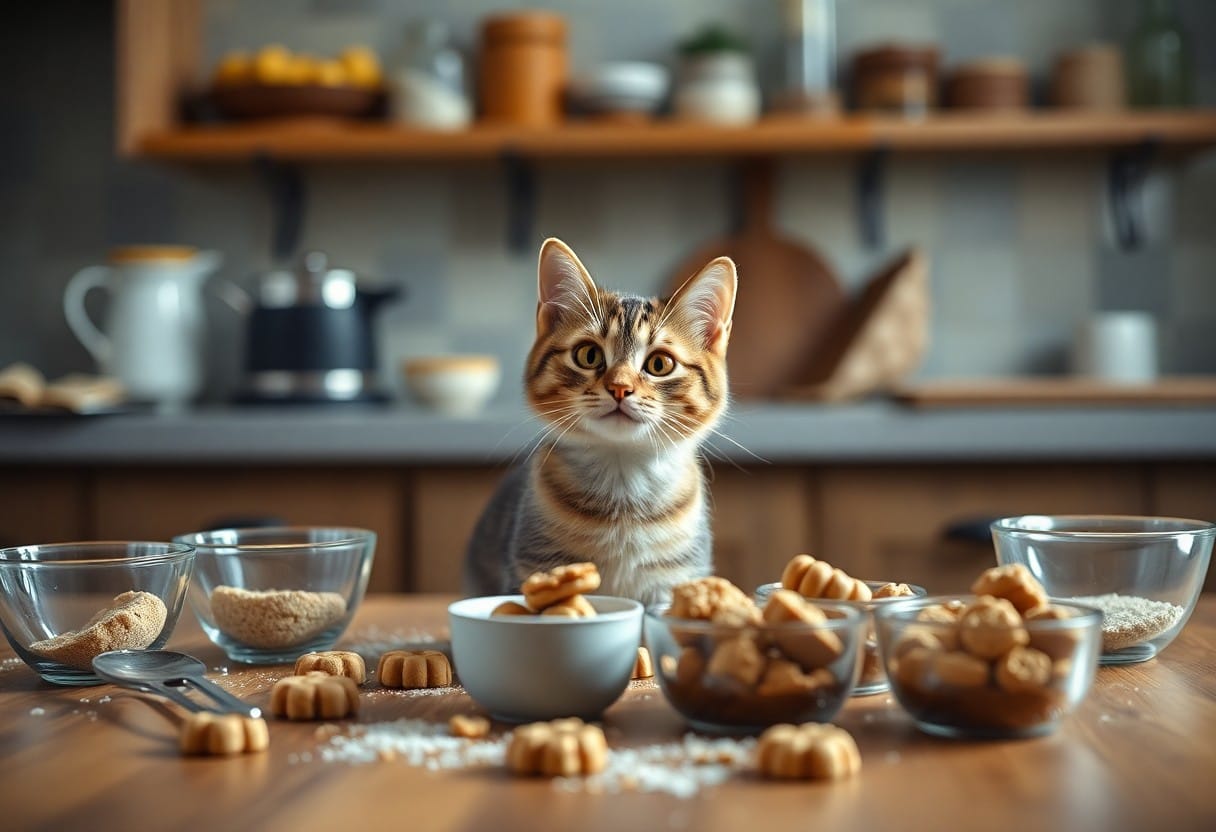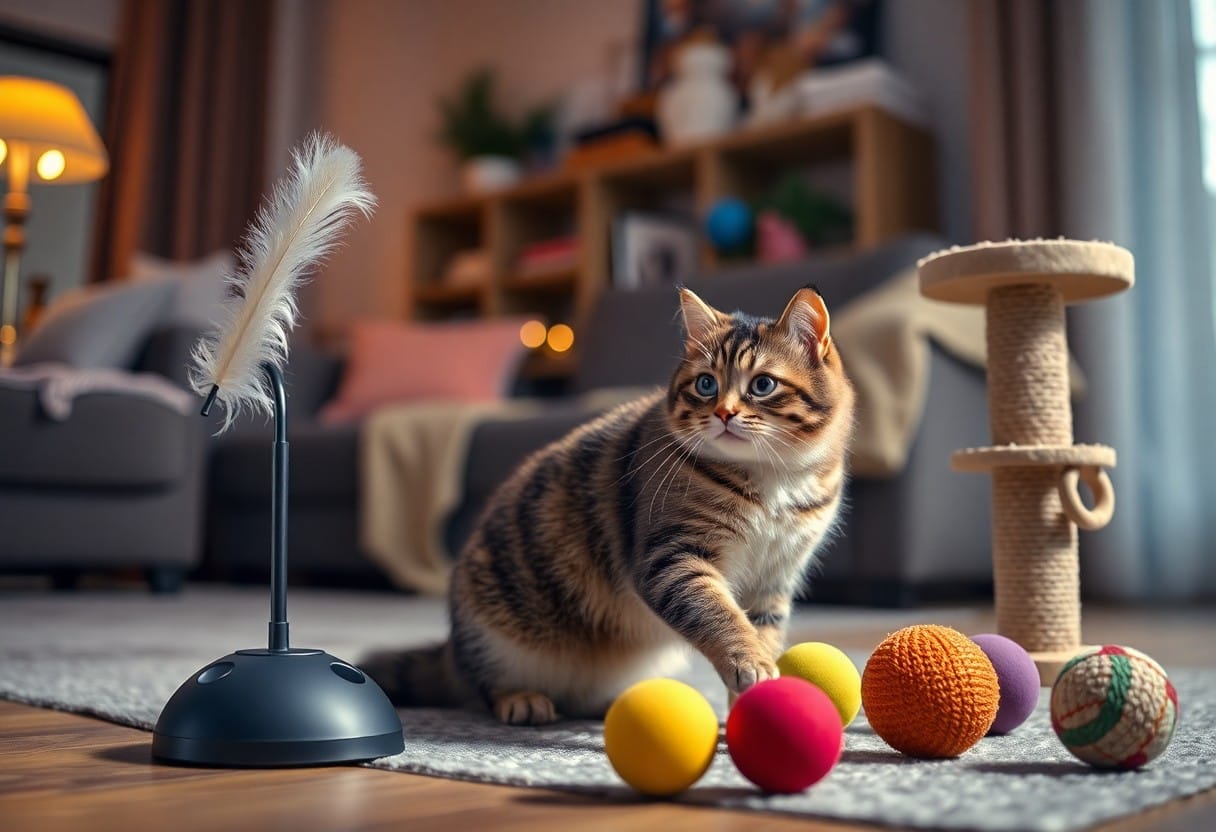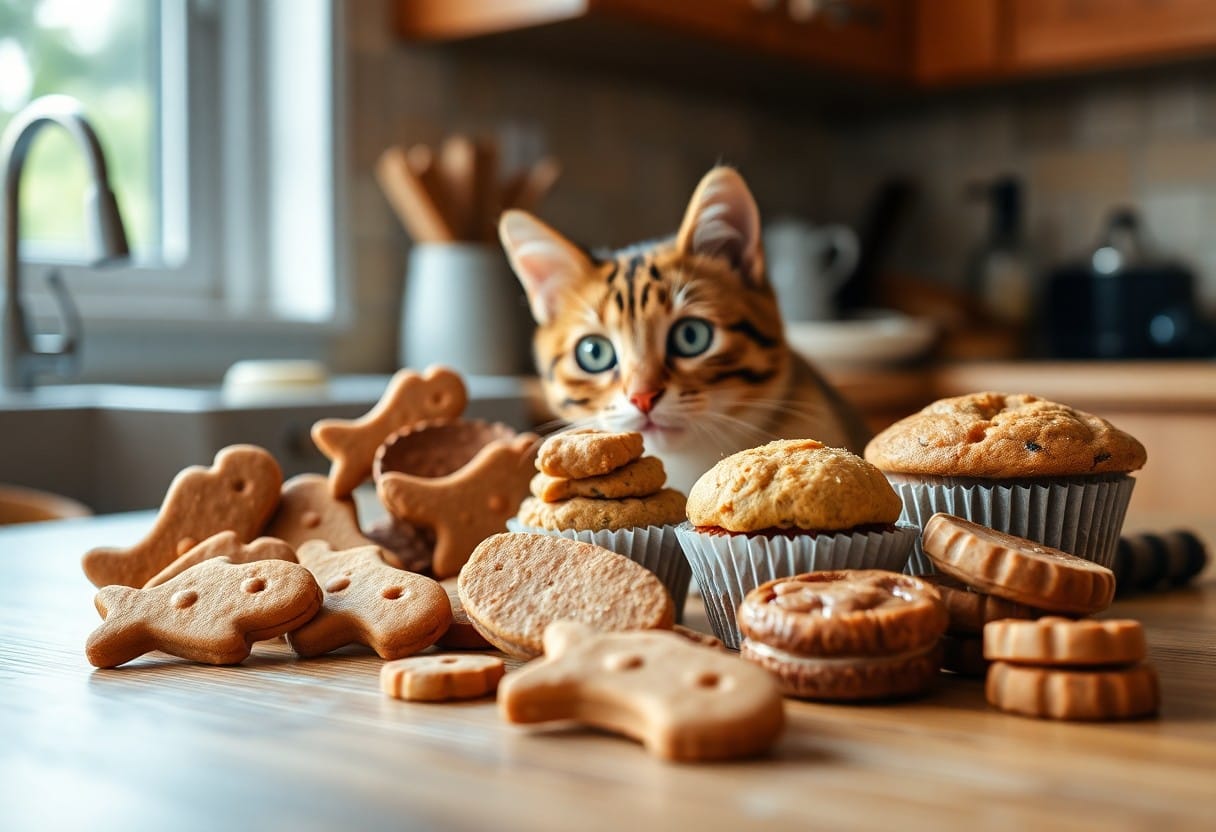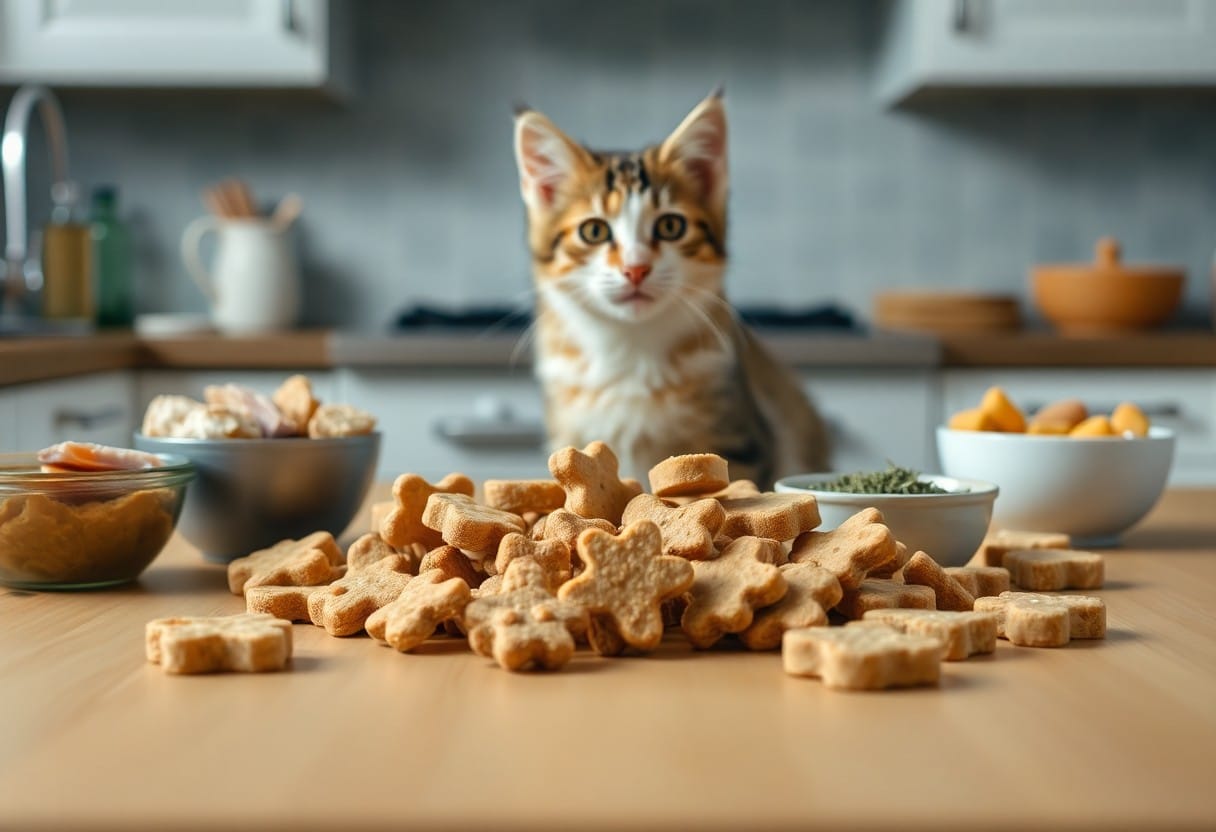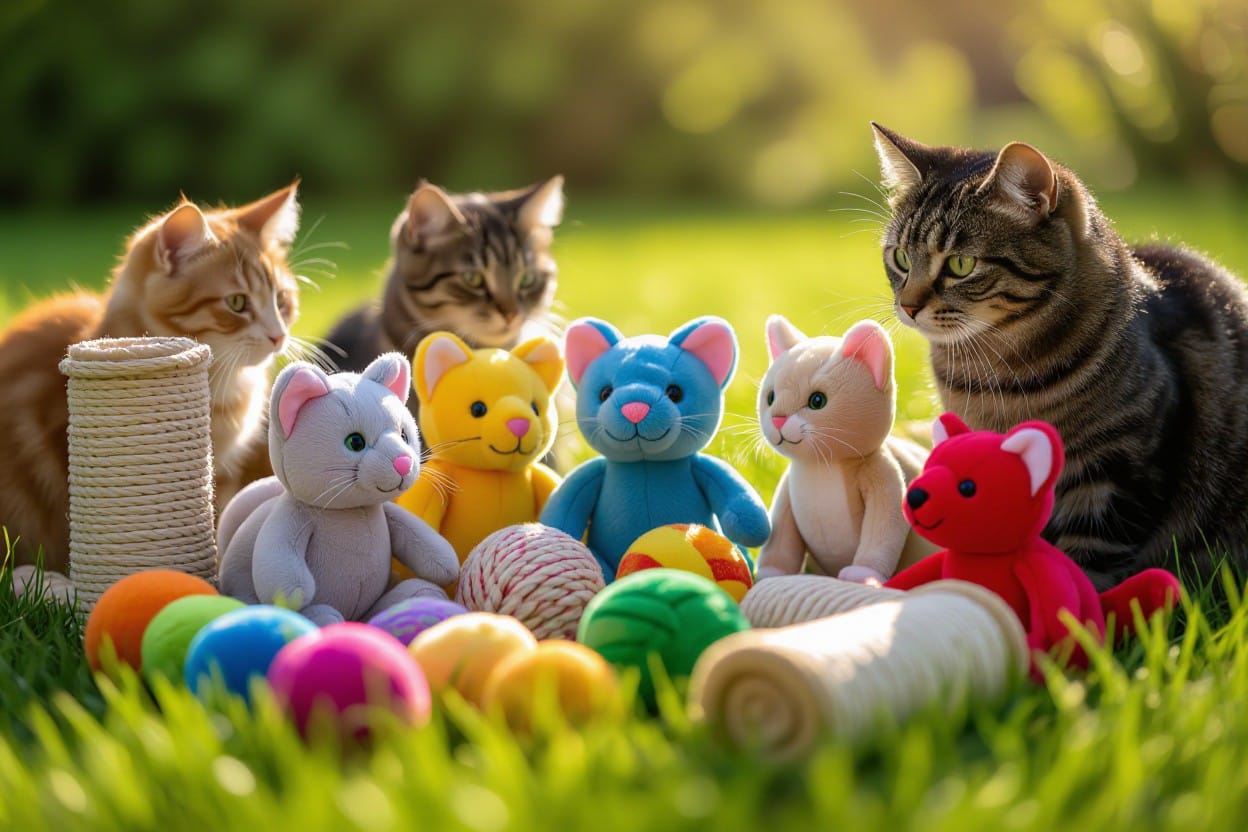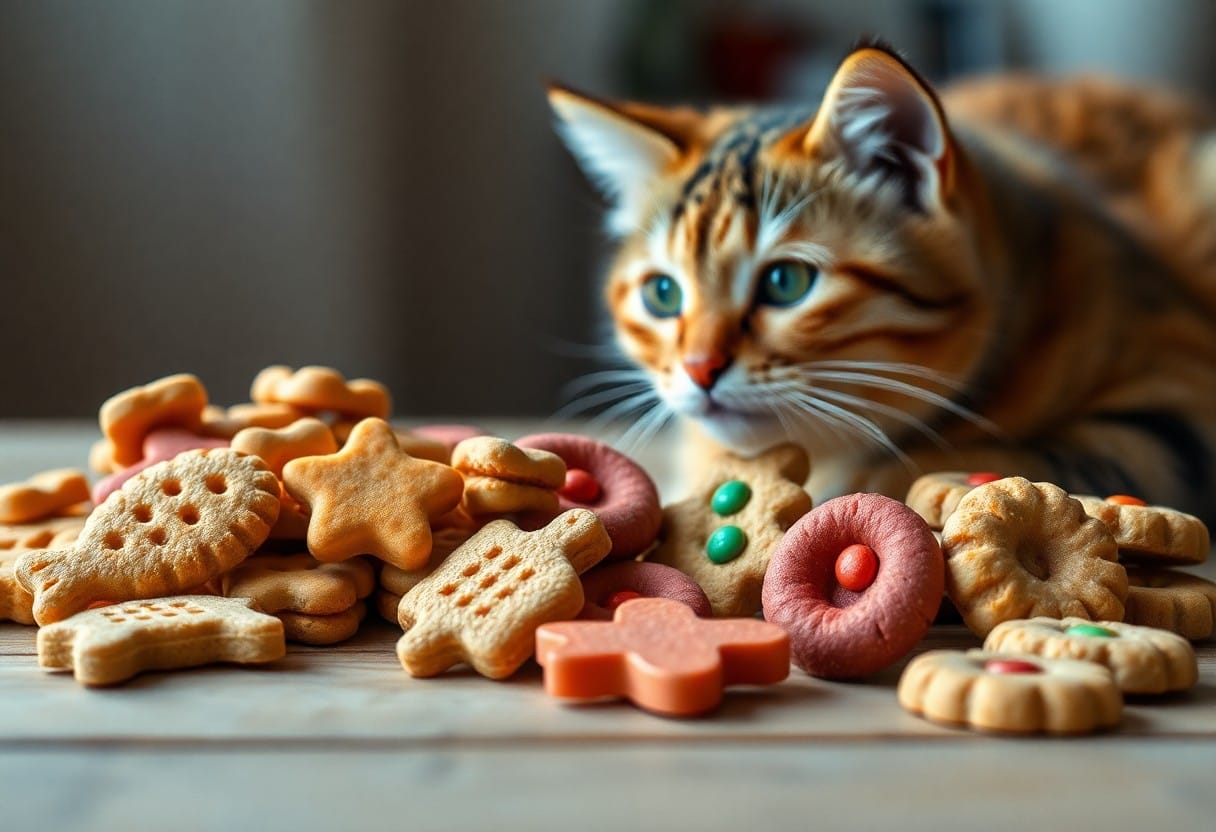There’s a world of fun and creativity waiting for you in the kitchen with your feline friend! Making homemade cat treats not only ensures that your kitty enjoys safe and healthy ingredients, but it also allows you to bond over something truly special. In this blog post, you will discover simple recipes that cater to various dietary needs and taste preferences. Get ready to whip up tasty delights that will have your cat purring with delight, all while knowing exactly what goes into their treats!
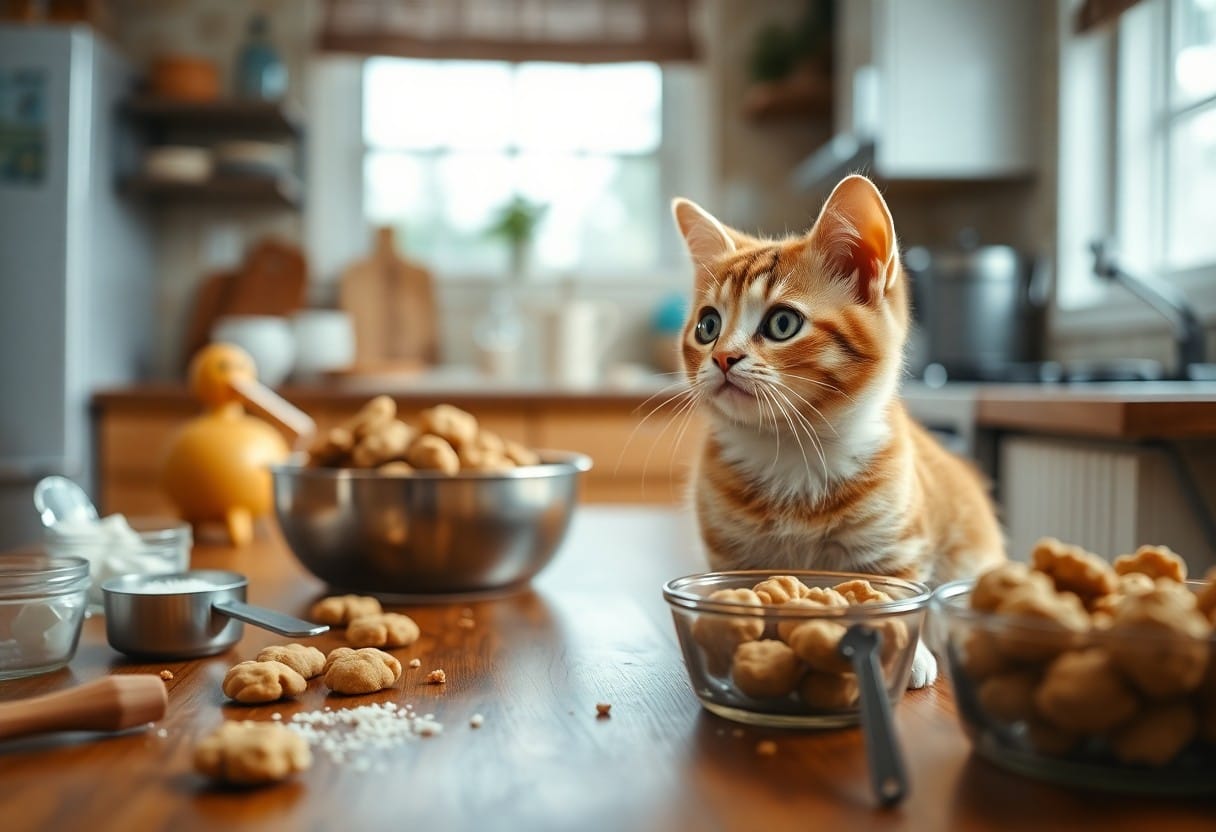
Key Takeaways:
- Homemade cat treats can be made using simple ingredients commonly found in your kitchen, making it easy to cater to your cat’s dietary preferences.
- Many recipes can be tailored to accommodate common allergies or sensitivities, ensuring that all cats can enjoy tasty snacks without health risks.
- Engaging in DIY treat-making can strengthen the bond between you and your cat, while also allowing you to ensure the quality and freshness of what they consume.
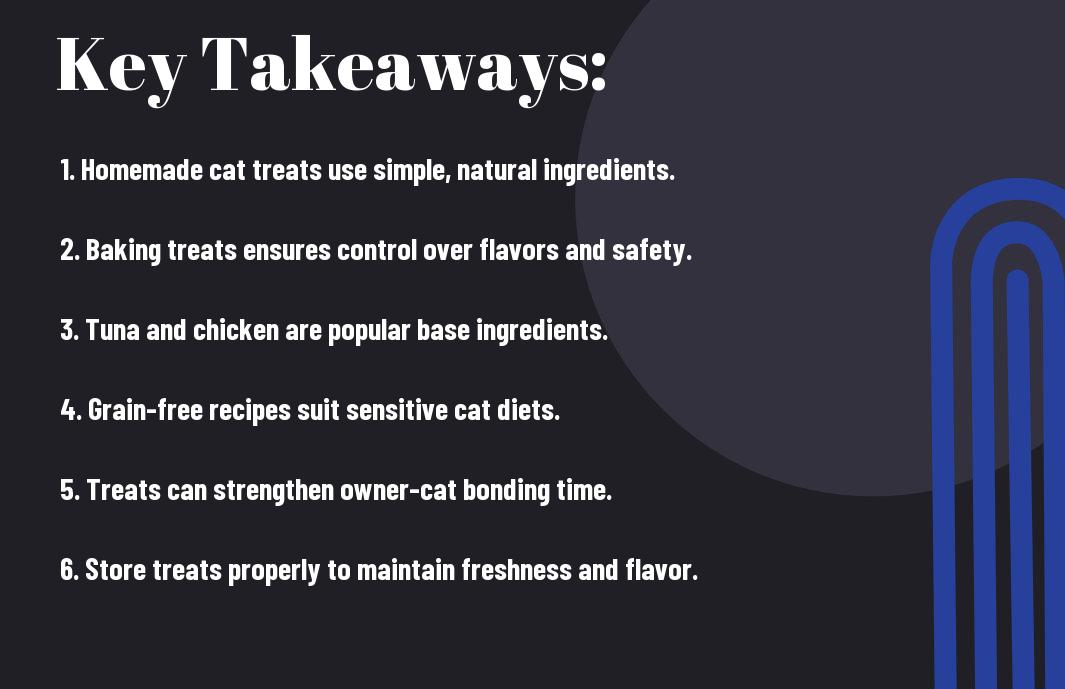
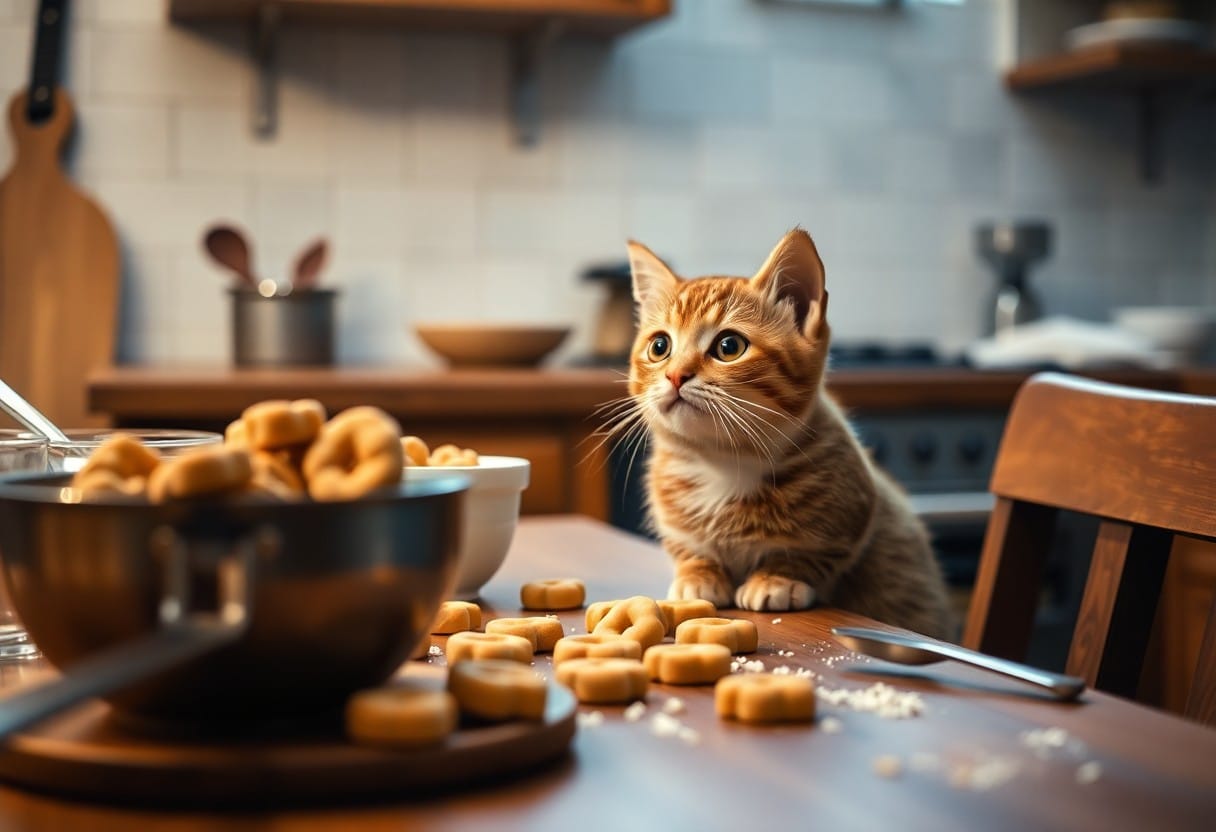
Benefits of Homemade Cat Treats
While buying commercial cat treats may seem convenient, making homemade cat treats allows you to control the ingredients and ensure your furry friend is getting the best nutrition. You can tailor the flavors to your cat’s preferences, avoid preservatives and fillers, and even support your pet’s specific health needs. Plus, crafting these treats can strengthen your bond with your cat, offering a personal touch that store-bought snacks simply can’t provide.
Health Advantages
Below are some notable health advantages to consider when you opt for homemade cat treats. You can select ingredients rich in nutrients, eliminating allergens and artificial additives often found in commercial products. By using fresh, wholesome components, you can enhance your cat’s overall health, potentially improving their coat, energy levels, and digestion. Tailoring treats to address specific health concerns means you can actively contribute to your cat’s well-being.
Cost-Effectiveness
After crafting your own cat treats, you may find that it is more cost-effective than buying premium store brands. Many of the ingredients you need to prepare these snacks are often staples in your kitchen, allowing you to create delicious treats without the hefty price tag.
Due to the rising costs of commercial pet treats, making your own can significantly cut down expenses while ensuring quality. Most homemade recipes use simple, inexpensive ingredients that you likely already have, like chicken or tuna. Additionally, you can make larger batches, saving your money in the long run. This approach not only satisfies your cat’s cravings but also keeps your budget in check, allowing for more funds to be allocated to other important pet care needs.
Essential Ingredients
Some ingredients are vital when making DIY cat treats that are not only delicious but also safe for your furry friend. It’s vital to focus on high-quality, natural components that cater to your cat’s nutritional needs. A mix of protein sources, healthy fats, and some vital vitamins will help you create irresistible snacks your cat will love. Additionally, make sure to avoid items that can be harmful to cats to ensure their health and wellbeing.
Commonly Used Ingredients
The most commonly used ingredients for DIY cat treats include chicken, fish, and turkey, as they offer a rich source of protein. You can also incorporate ingredients like pumpkin, oats, and catnip for added flavor and health benefits. Always opt for simple, wholesome ingredients that promote your cat’s vitality and happiness as you create these tasty delights.
Safety Considerations
Between the excitement of creating new treats and ensuring their safety, double-check the ingredients you plan to use. Certain foods can be harmful to your cat and should be strictly avoided. For example, avoid ingredients like onions, garlic, chocolate, and grapes, as these can be dangerous for your cat’s health.
Ingredients you choose can greatly affect your cat’s health. Focus on natural protein sources, such as cooked chicken or fish, which support their dietary needs. Avoid ingredients that are toxic to cats, such as onions, chocolate, and raisins. Consider including healthy fats, like fish oil, for a shiny coat, and explore options like oats or pumpkin for fiber. Always prioritize your cat’s health by using safe, wholesome ingredients and consult your veterinarian if you’re unsure about any item.
Easy Recipes
For every cat owner, creating homemade treats can be a fun and rewarding experience. With just a few simple ingredients and some basic steps, you can whip up delicious snacks tailored to your furry friend’s taste. Read on to discover various recipes that cater to kittens, adult cats, and those seeking grain-free alternatives!
Treats for Kittens
Before you start baking, it’s necessary to consider your kitten’s nutritional needs. Young cats require higher levels of protein and fat for their growth and development. Opt for recipes that contain healthy ingredients like chicken, fish, or tuna, and always keep the portions small to suit their little appetites.
Treats for Adult Cats
About adult cats, they often have different dietary requirements than their younger counterparts. As your feline friend matures, it’s important to focus on high-quality protein sources and monitor their calorie intake. Treats should be more than just tasty; they should also provide necessary nutrients to support their overall health.
Also, consider incorporating various protein sources into your recipes, such as turkey, salmon, or even dried catnip for extra flavor. Ensure you keep an eye on your cat’s weight—too many treats can lead to obesity. Use these recipes as a supplement, not a substitute for a balanced diet to keep your cat healthy and active.
Grain-Free Options
Adult cats that are sensitive to grains or have dietary restrictions will appreciate grain-free options. These treats typically feature meat, fish, or vegetables as their main ingredients, promoting better digestion and overall health.
Due to the popularity of grain-free diets, you can easily find recipes that exclude grains entirely while still offering a flavorful snack for your furry friend. Focus on using ingredients like pumpkin, sweet potatoes, or peas, as these provide vital nutrients without the use of grains. Make sure to check all ingredients for potential allergens, ensuring a safe and healthy treat for your cat.
Tips for Success
Unlike many culinary endeavors, making DIY cat treats can be simple and rewarding. To ensure your success, keep these tips in mind:
- Always use fresh ingredients.
- Consult a vet for any dietary restrictions.
- Try different flavors to find what your cat loves.
- Be patient and refine your recipes.
Knowing these tips will help you make delicious and healthy treats for your furry friend.
Proper Storage
The way you store your homemade cat treats can significantly affect their freshness and safety. After they cool completely, place them in an airtight container and store them in a cool, dry place. For longer shelf life, consider refrigerating or freezing them. Always check for any signs of spoilage before giving them to your cat, ensuring they remain tasty and safe.
Measuring Ingredients
Success in making cat treats often hinges on the precision of your measuring. Use standard measuring cups and spoons to ensure you’re adding the right amounts, as this affects both the taste and texture of the treats. Furthermore, accurate measurements can help you avoid any imbalances in ingredients which could lead to unsuccessful batch or dissatisfied kitty.
Storage of your measured ingredients is another key factor in keeping your treats tasty. Always seal your dry ingredients in air-tight containers and keep them in a cool, dry place to maintain their quality. Liquid ingredients should be stored properly as well to avoid spoilage. If you’re prepping in bulk, labeling containers with dates can help, ensuring that you’re using fresh ingredients for the best results.
Treats for Special Dietary Needs
Keep your furry friend’s health in mind while treating them to delicious, homemade snacks. For cats with special dietary needs, it’s vital to create treats that cater to their unique requirements. This way, you can ensure they enjoy tasty rewards without compromising their health.
Allergy-Friendly Recipes
Along with being delicious, these recipes are designed specifically for cats with food allergies. Using simple and safe ingredients such as pumpkin, tuna, or oat flour can keep your cat satisfied while avoiding allergens. Always consult your veterinarian before trying new recipes to ensure they fit your cat’s dietary restrictions.
Low-Calorie Treats
On a lighter note, opting for low-calorie treats helps to maintain your cat’s healthy weight while still providing a scrumptious snack. These recipes generally use ingredients like plain chicken or fish combined with natural fillers such as pumpkin or sweet potato, making them both nutritious and low in calories.
To create the perfect low-calorie treats, focus on using lean proteins and healthy vegetables, which help satisfy your cat’s cravings without adding unwanted weight. Incorporating small portions of treats throughout the day will allow you to bond with your cat while ensuring they stay active and healthy. Stay mindful of your cat’s overall caloric intake to prevent obesity; even healthy treats should be given in moderation.
Engaging Your Cat with Homemade Treats
Not only do homemade cat treats satisfy your feline’s cravings, but they also provide an opportunity for engagement and enrichment. By incorporating these treats into your daily routine, you can explore new ways to interact with your cat. This strengthens your bond while keeping your pet mentally stimulated and happy. Furthermore, as you experiment with different recipes, you’ll discover your cat’s unique preferences, making treat time even more enjoyable for both of you.
Using Treats for Training
Beside offering tasty rewards, you can use homemade treats as effective tools for training your cat. Positive reinforcement helps reinforce good behavior, making it easier for you to teach commands or skills. When your cat successfully follows a command or displays a desired behavior, reward them immediately with a treat. This builds a connection between their actions and the reward, enhancing the training experience.
Creative Ways to Serve
With a bit of creativity, you can turn treat time into an engaging activity for your cat. Instead of simply placing treats in a bowl, consider using puzzle feeders or hiding them throughout your home to encourage exploration. This challenges your cat’s instincts and keeps them physically active. Always ensure that the serving methods are safe, avoiding any potential hazards. Additionally, you can create a treat “treasure hunt” by scattering smaller bits of your homemade treats around their favorite play areas.
Ways to serve treats creatively can add excitement to your cat’s routine. For instance, you can use different textures, shapes, or even colors to make the experience visually stimulating. You might also think about integrating treats into toys that dispense them when played with or try feeding them during interactive games. Always keep in mind to tailor the serving method to your cat’s individual personality and preferences, observing how they react. This not only makes treat time more enjoyable but also enhances your bond as you learn what excites your pet the most!
Final Words
Drawing together the joys of pet care, making DIY cat treats can enhance your bond with your feline friend while ensuring they enjoy healthier snacks. With simple ingredients and recipes, you can easily create delightful treats tailored to your cat’s taste. Not only do these homemade goodies provide nutritional benefits, but they also engage your creativity and show your love in a personal way. Try experimenting with different flavors and textures to discover your cat’s favorites, making treat time a fun and rewarding experience for both of you.
FAQ
Q: What ingredients can I use to make DIY cat treats?
A: You can use a variety of ingredients to create delicious and healthy cat treats. Common options include cooked chicken or turkey, fish like tuna or salmon, pumpkin puree, plain yogurt, and catnip. It’s important to ensure that any ingredients you choose are safe for cats and free from harmful additives. Natural ingredients are best, and be cautious with grains, as some cats may have sensitivities.
Q: How do I store homemade cat treats?
A: Homemade cat treats should be stored in an airtight container to maintain freshness. Depending on the ingredients used, you can keep them in the refrigerator for up to a week or freeze them for longer storage. If you choose to freeze the treats, make sure to portion them out so that you can easily take out small amounts as needed without having to thaw the entire batch.
Q: How often can I give my cat homemade treats?
A: While homemade treats can be a fun and healthy addition to your cat’s diet, moderation is key. Treats should not make up more than 10% of your cat’s daily caloric intake. It’s best to offer these as occasional rewards or during training sessions. Always observe your cat’s reaction to new treats and consult with your veterinarian if you have any concerns about dietary changes.
